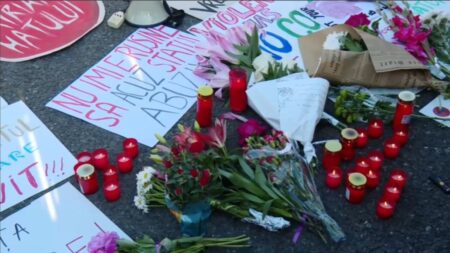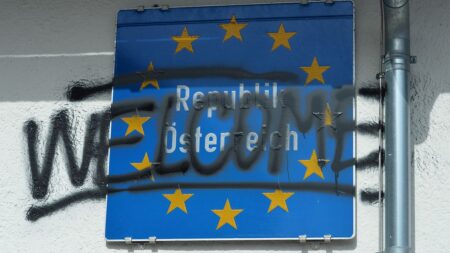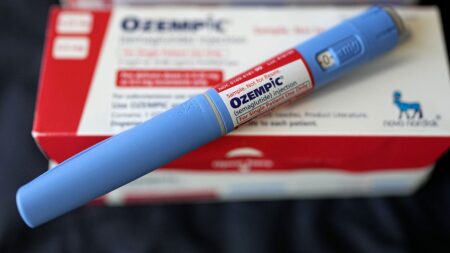US President Donald Trump said that his Russian counterpart Vladimir Putin told him “very strongly” in a phone call on Wednesday that he will respond to Ukraine’s weekend drone attack on Russian airfields.
“We discussed the attack on Russia’s docked airplanes, by Ukraine, and also various other attacks that have been taking place by both sides,” Trump wrote.
“It was a good conversation, but not a conversation that will lead to immediate Peace.”
The call reportedly lasted for an hour and 15 minutes and was Trump’s first known contact with Putin since 19 May.
In a briefing with government ministers earlier on Wednesday, Putin made no mention of Ukraine’s audacious operation deep inside Russia on Sunday, instead referring only to an operation carried out by Ukraine’s Security Service (SBU) on Tuesday which saw the Kerch Bridge damaged.
The bridge is a key piece of Russian infrastructure illegally built by Moscow after its unilateral annexation of the Ukrainian peninsula in 2014.
Putin referred to that attack as “certainly a terrorist act.” However, Ukraine’s SBU said the first explosion was timed to take place just before 5am when there were no civilians on or near the bridge.
The Russian leader also questioned the value of faltering peace talks with Ukraine, accusing Kyiv of not being interested in peace.
“What is there to talk about? How can we negotiate with those who rely on terror?” he said.
The second round of face-to-face talks between Ukraine and Russia took place in Istanbul on Monday, with no major breakthrough made towards a lasting ceasefire.
The two sides however agreed to another prisoner of war exchange, with Ukraine’s Defence Minister Rustem Umerov saying seriously ill and young soldiers would be swapped.
During the talks in Istanbul, Ukraine also gave Moscow officials a list of hundreds of Ukrainian children forcefully deported by Russia.
“We are talking about hundreds of children whom Russia has illegally deported, forcibly transferred or is holding in the temporarily occupied territories. We are waiting for a response. The ball is in Russia’s court,” the head of Ukraine’s presidential office Andriy Yermak said on Telegram.
What was Operation Spiderweb?
Ukraine’s President Volodymyr Zelenskyy said it took Kyiv “one year, six months, and nine days from the start of planning to effective execution” of the operation.
Kyiv managed to smuggle FPV drones deep inside Russia and hide them inside trucks in mobile log cabins.
The cabins’ roofs were then opened remotely and the drones proceeded to launch their attack on Russian military bombers.
Social media footage widely shared by Russian media appears to show the drones rising from inside containers, while the panels lie discarded on the road.
On Wednesday, Zelenskyy said Kyiv would not have launched its drone strike on Russian strategic bombers if Moscow had accepted Kyiv’s calls for a ceasefire.
Zelenskyy said Ukraine has repeatedly urged Russia to accept the US-backed 30-day ceasefire proposal, which could be the first step to putting an end to Russia’s all-out war against Ukraine.
However during the second round of talks on Monday, Moscow rejected the proposal once again.
“If there had been a ceasefire, would the operation have taken place? No,” Zelenskyy explained, adding that roughly half of the planes will be impossible to repair, while others will require significant time to be put back into service.
On Wednesday, Ukraine’s security service (SBU) released new drone footage of Operation “Spiderweb,” showing how exactly Kyiv struck 41 Russian heavy military bombers on Sunday.
The footage shows Ukraine’s first-person-view drones striking four Russian airfields: Dyagilevo in the Riazan region, Ivanovo in the Ivanovo region, Belaya air base in the Irkutsk region, located in south-eastern Siberia over 4,000km east of the frontline, and Olenya air base in Russia’s Murmansk region, some 2,000km away from Ukraine’s border.
Kyiv said these were the airfields where Russian strategic aviation “had been based”. The damaged aircraft include A-50, Tu-95, Tu-22, Tu-160, as well as An-12 and Il-78.
Moscow uses these heavy bombers for daily attacks on Ukrainian cities.
The SBU also revealed that it used a modern UAV control technology during this operation. It combined autonomous artificial intelligence algorithms and manual operator interventions.
Ukraine’s security service says some of the UAVs lost signal and would switch to an artificial intelligence-assisted mission following a pre-planned route. The warhead then automatically detonated as it approached and made contact with a specific target.
Earlier, Ukraine’s President Volodymyr Zelenskyy said that 117 drones had been used in Operation Spiderweb, each with its own pilot.
The General Staff of Ukraine’s Armed Forces confirmed on Tuesday that Russia lost 41 military aircraft.
Read the full article here

















